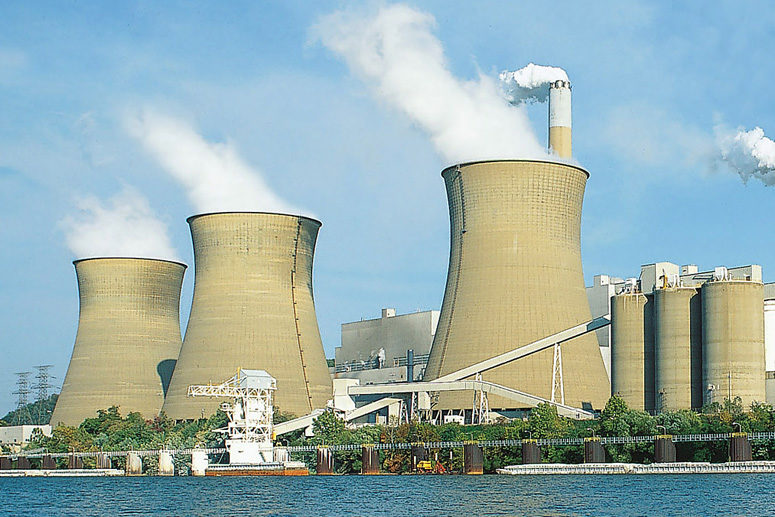During their first presidential debate in September, the two candidates were sparring on economic issues, when Hillary Clinton steered the conversation to a different topic—the environment.
“Some country is going to be the clean energy superpower of the 21st century,” Clinton said. “Donald thinks that climate change is a hoax perpetrated by the Chinese. I think it’s real.”
“I did not,” Trump interjected. “I do not say that. I do not say that.”
Clinton was referring to a series of tweets and statements Trump has made since 2012, in which he in fact did call climate change a hoax made to help the Chinese economy—though he later said he was only kidding.
But energy analysts say that what each candidate thinks about climate change is actually a very big deal, because it dictates what each would do with regard to energy policy.
LISTEN: Where Clinton and Trump Stand on Climate Change
“Hillary Clinton recognizes what the entire scientific community recognizes,” says Jim Sweeney, professor of management science and engineering at Stanford University. “Global climate change is real, it’s caused by human sources, it creates problems and we need to do something about global climate change.”
Trump’s take? After the climate hoax issue came up in the debate, Trump’s campaign attempted to clarify his views. Kellyanne Conway, his campaign manager, told CNN Trump believes that global climate change is real; but it’s natural and human actions have no impact on it—a position which is “basically inconsistent with the science,” Sweeney says.
And so it follows that Trump’s energy plan is fossil fuel heavy—with a steady diet of drilling, mining and fewer regulations—all in an effort to increase American competitiveness and energy independence.
For example, Trump says he would cancel the Waters of the U.S. rule, which expands the number of waterways protected by the Clean Water Act to include smaller tributaries to large rivers. The regulation is opposed by the energy and farming industries.
“We need regulations for safety and environment, but regulations are becoming a major industry, and we’re going to make it a much smaller industry,” Trump told a group of natural gas executives and professionals in Pittsburgh in September. “Your regulations are going to be cut back to a point you’ll be able to grow your businesses and start new businesses.”
Trump says he would also push forward on large energy infrastructure projects, like the Keystone XL pipeline and the Dakota Access pipeline. Both have been stopped by the Obama administration.
He has also pledged to bring back the coal industry by cutting regulations. That’s a long shot, because regulations aren’t the main reason coal production is at a 30-year low in the U.S. Analysts agree the culprit is cheap natural gas from fracking.
“In order to help the coal industry regain its position, [Trump] would have to cripple the natural gas industry,” Sweeney says. “He’s also promised to help the natural gas industry, and so I don’t see how he could do both simultaneously.”
North Dakota congressman and Trump energy adviser Kevin Cramer told StateImpact Oklahoma the two candidates just have different views on the role of government in determining how Americans get their energy and solve environmental problems.
“Are we going to unleash the innovation of the private sector by working with the energy industry and stakeholders on an environmental policy that is realistic, that is actually helpful, that doesn’t kill the innovator?” Cramer said.
Trump has also said he would back the U.S. out of the Paris Climate agreement, signed by 195 countries in order to avoid runaway climate change. But experts say that could be difficult for Trump to do. This month, enough countries ratified the deal to make it a binding international agreement.
“That means that it’ll take at least four years for any U.S. president to unwind our obligation under international law,” says Varun Sivaram, Acting Director of Energy Security and Climate Change at the Council on Foreign Relations.
Could Trump actually walk the U.S. back from the historic Paris climate agreement? Experts say, probably not. This month, enough countries ratified the deal to make it a binding international agreement—regardless of U.S. action.
Sivaram, who has advised the Clinton campaign on climate and energy policy, says Trump could still reverse some of the policies the U.S. could use to meet its obligations—including the Obama administration’s fuel efficiency standards and the Clean Power Plan, which reduces carbon emissions from the power sector. That plan is currently under judicial review.
Clinton would go in the opposite direction on energy. At a rally near Seattle in March, she promised to carry Obama’s work on climate change forward.
“I will protect, defend and build on that work, but we’ve got to go further,” she said. “I want to see us deploy a half a billion more solar panels by the end of my first term.”
That’s a part of her plan to ramp up solar capacity by 700 percent in a mere four years in order to provide enough renewable energy to power every home in the U.S. by 2027.
“That’s an unbelievably high target,” Sivaram says. “I think we can achieve it. But it’s not going to happen on auto-pilot. She will actually have to do things in order to achieve that target.”
To do all this, Clinton proposes a $60 billion Clean Energy Challenge, which would modernize the country’s electricity grid, put renewable energy projects on public lands, and invest heavily in renewables research and development. Clinton is also proposing $30 billion for coal communities that are and will be hurt by a move away from fossil fuels.
If she can pull off all those things—with a Congress that is likely to be resistant to her ideas—Sivaram says she could make her campaign promise a reality.
“You put all those policies together, and then you’ve got a chance of meeting [her] energy goal.”

